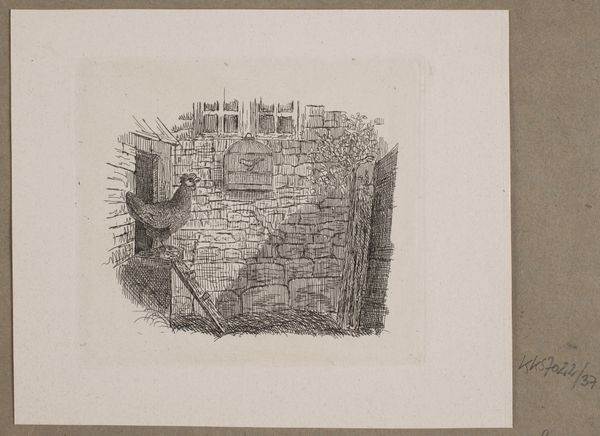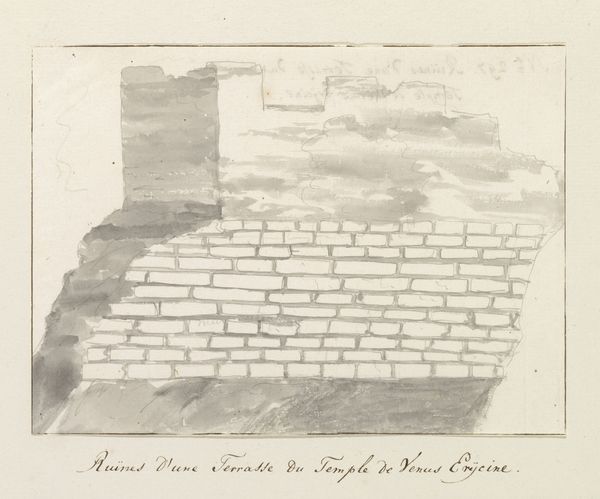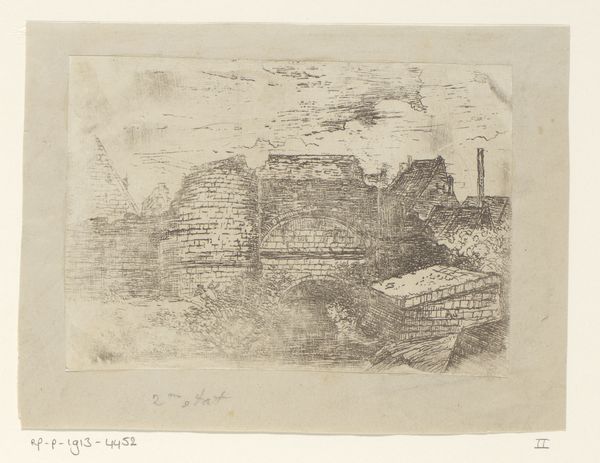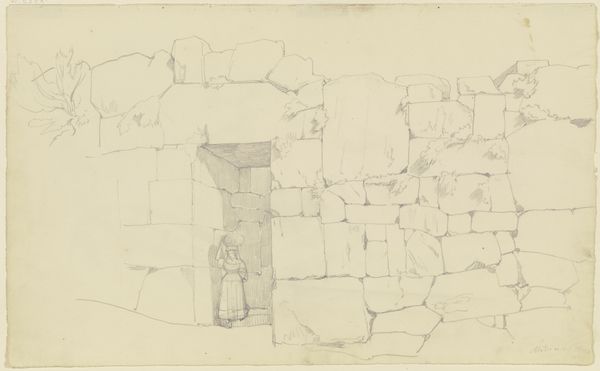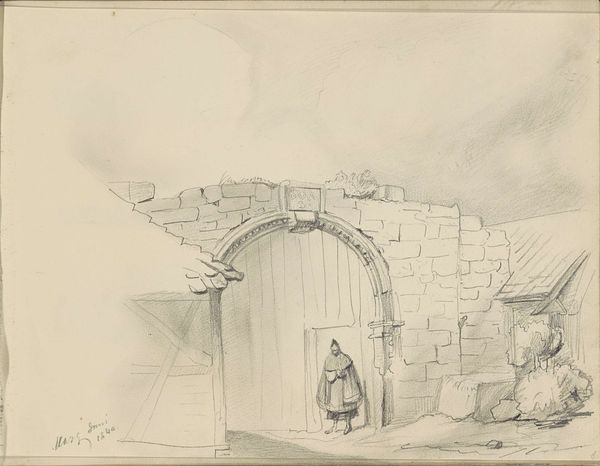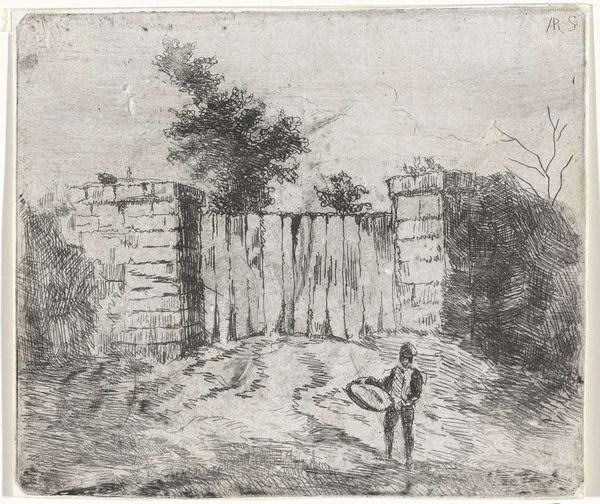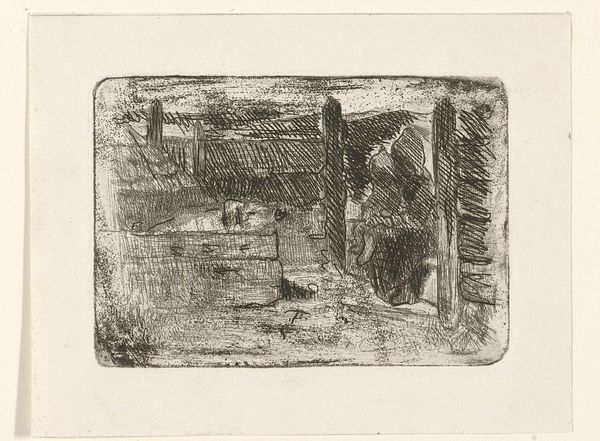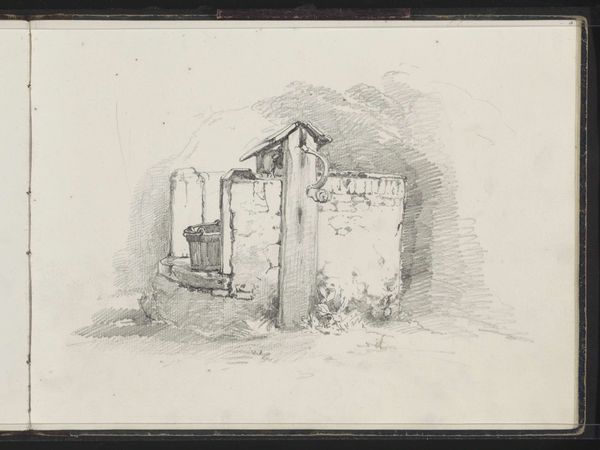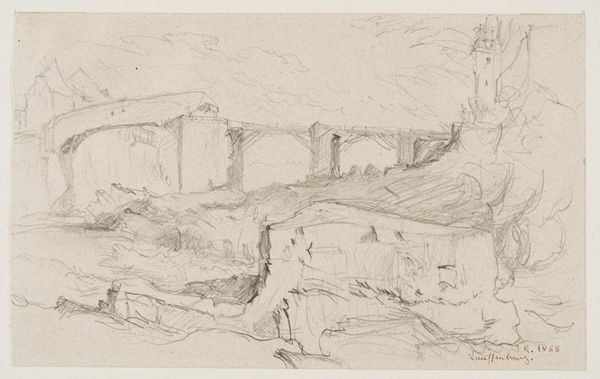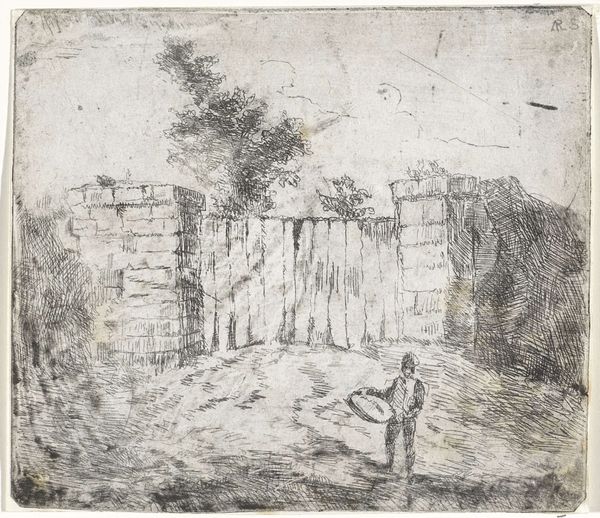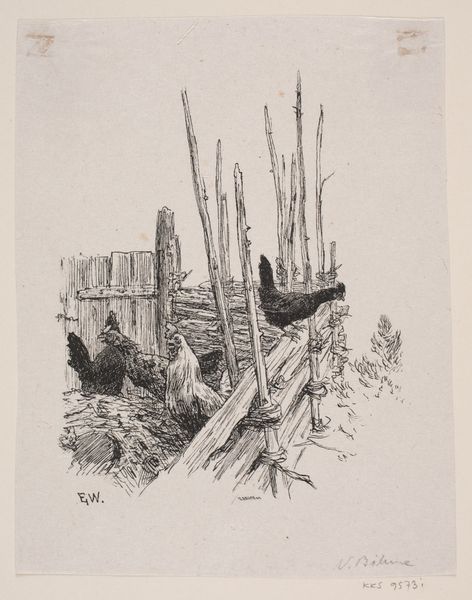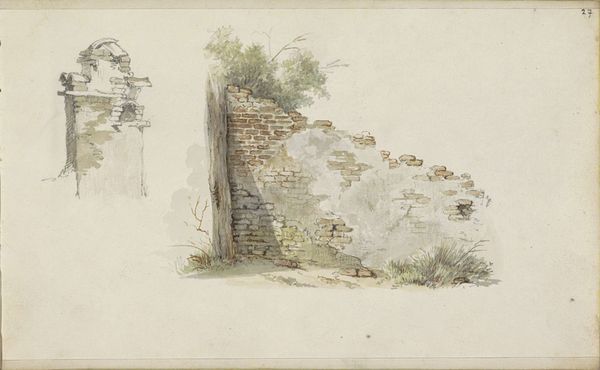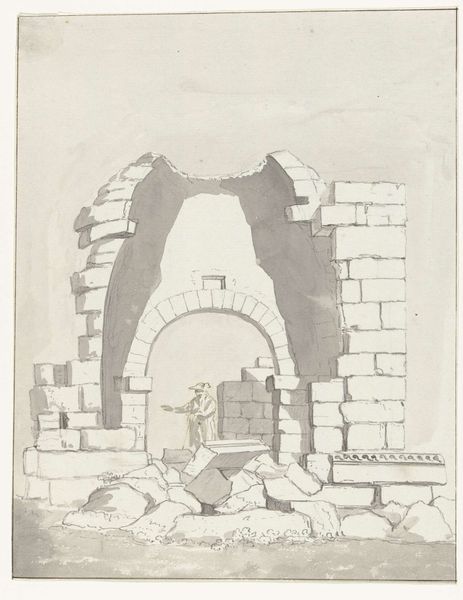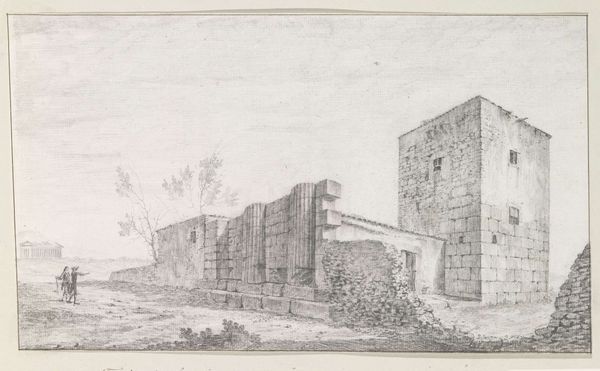
Buitenkant van de buitenmuur van de antieke tempel in de oude stad Manduria 1778
0:00
0:00
tempera, painting, watercolor
#
neoclacissism
#
tempera
#
painting
#
landscape
#
etching
#
watercolor
#
ancient-mediterranean
Dimensions: height 172 mm, width 265 mm
Copyright: Rijks Museum: Open Domain
Louis Ducros made this wash drawing of the outer wall of an ancient temple in Manduria, Italy. This kind of architectural study gained popularity in the late 18th century, reflecting a growing fascination with classical antiquity. Ducros’s drawing invites us to think about the institutional contexts that shape the production and reception of art. How do museums, galleries, and even the art market influence what we see and how we interpret it? The rise of Neoclassicism coincided with the expansion of museums and academies, which promoted the study of ancient art and architecture. By depicting a temple wall, Ducros engages with the history of art and its place within society. Was he self-consciously conservative or progressive? Did he critique the institutions of art? Historians can use a variety of resources to understand the social and institutional context of art, from archival documents to contemporary publications. By studying these sources, we can better appreciate the complex ways in which art reflects and shapes its world.
Comments
No comments
Be the first to comment and join the conversation on the ultimate creative platform.
